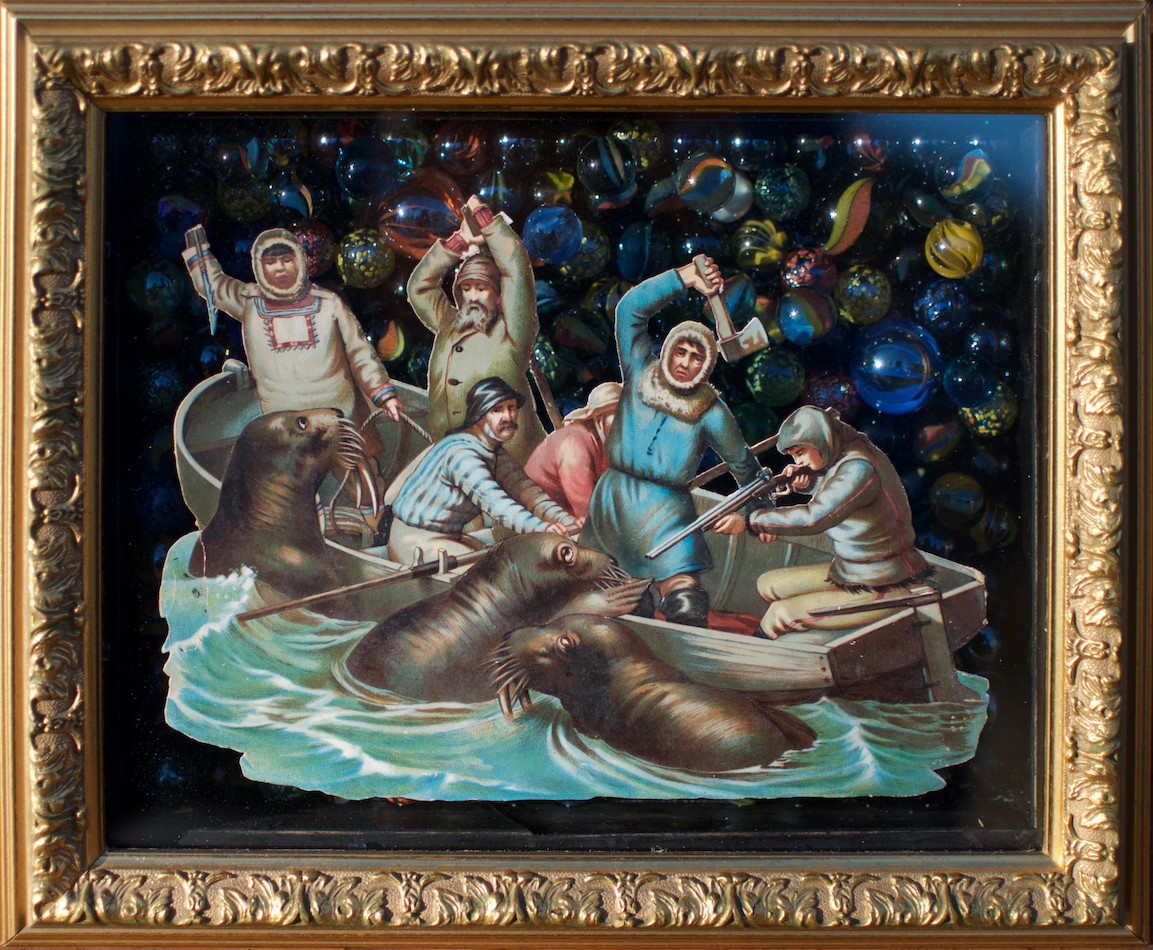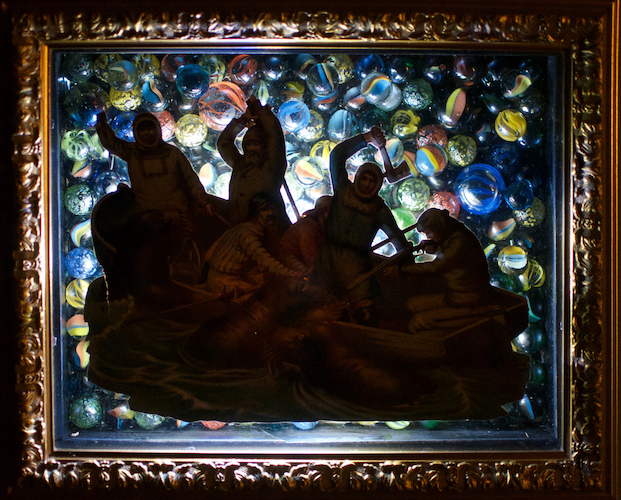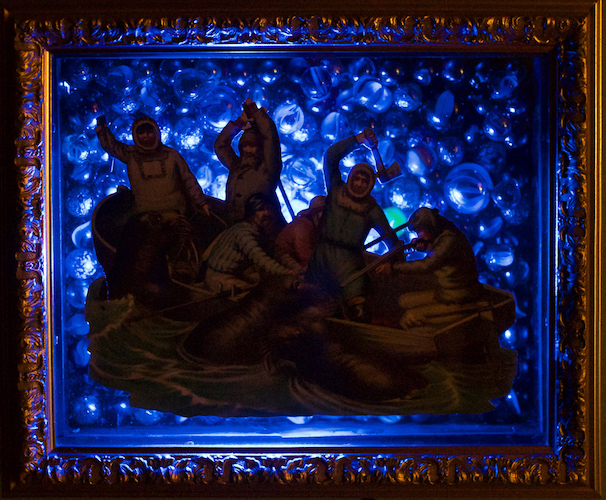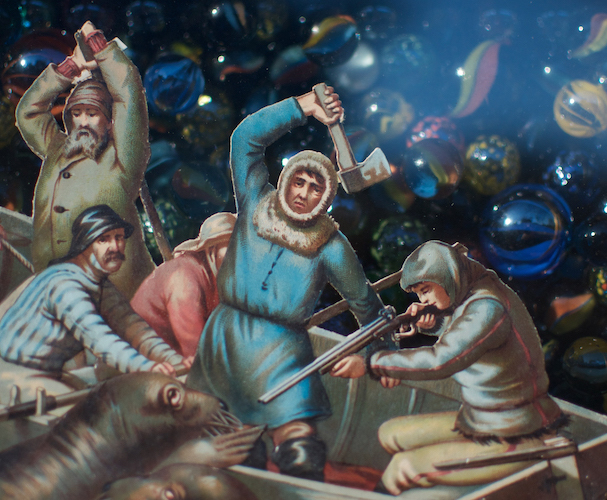
For the Czar
Assemblage, 2017
Victorian die cut (does not depict Unangax peoples), frame, glass, marbles, wood box, aquarium light
12" x 9.75" x 2.5"
After Russian discovery of the Aleutians in 1745, the first wave of Russian fur traders (promyshlenniki) arrived. Targeting the valuable fur of sea otters and other marine mammals, they separated Unangax men from their families and villages, enslaving them in hunting crews to kill for Russian profit.
Before Russian occupation, the Unangax population is estimated to have been between 15,000 and 25,000 people. By 1787 (less than 50 years after contact) there were less than 1900. Russian brutality, introduced diseases, and the disruption of Unangax social structure quickly took its toll.
American ownership of Alaska did not always improve conditions. Russian-enforced seal hunting and settlement of Unangax on the Pribilof Islands continued under American rule. Sovereignty simply shifted from the Russian-American Company to the Alaska Commercial Company and the Unangax became government laborers for the US.
During WWII, the US government force evacuated hundreds of Unangax from the islands, relocating them in internment camps in southeast Alaska. These camps consisted of abandoned canneries, old gold mines and former Civilian Conservation Corps camps. In the dilapidated and unsanitary conditions, without adequate supplies, clothing, medicine or food, 75 died of starvation and disease.
"... this vast area of land, belonging by right to neither, was transferred from one European race to the offshoot of another."
-Hubert Howe Bancroft regarding the 1867 sale of Alaska to the US


